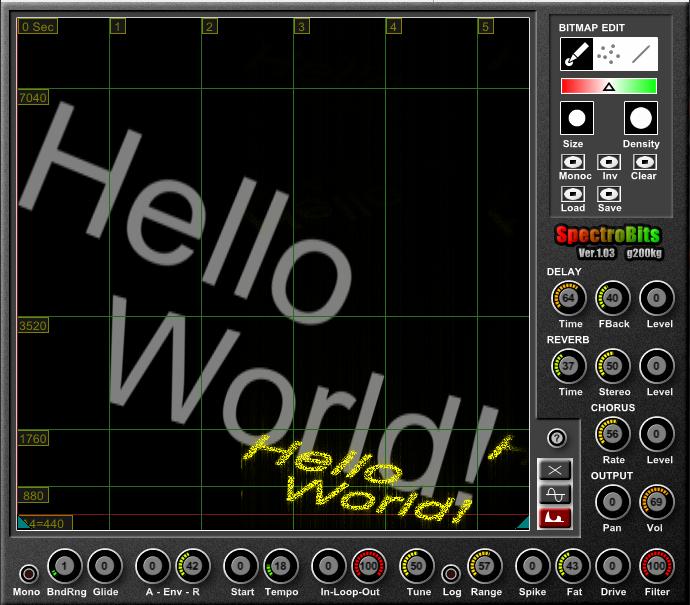First up is. Bitmaps & Wavs
This simple program converts bitmap images to sounds, and vice versa. Every line of a loaded image is assumed to be a spectrum of sound, and it is converted to sound signal by means of inverse Fourie transform.
Fancy hearing what a picture of your pet cat sounds like, well load it up and have a go. Another fun thing to try is embedding a hidden picture of yourself into that next song release you are working so hard on. The fact that the picture can be viewed from a spectrogram means that someone sooner or later is liable stumble across your hidden picture or message making your music that much more unique and helping you to build that cult mystique you so crave while upping the audios kitsch value.
To download the program just click on the picture of it at the following url.
http://www.elisanet.fi/victorx/BitmapPlayer.htm
AudioPaint
Along the same lines albeit with different results is Audiopaint. AudioPaint generates sounds from pictures. The program reads JPEG, GIF, PNG and BMP files and translates each pixel color and position into frequency, amplitude and pan information. AudioPaint can therefore be considered as a massive additive synthesizer.
You can find it here. http://www.nicolasfournel.com/
In case those just are not enough in the picture to audio category. There is the SpectroBits plugin.
SpectroBits interpretes images as a "Spectrogram". That means X-Axis as time, Y-Axis is frequency. (but the MIDI note determines the base-note). You can also import any images of ".bmp", ".png", ".jpg" and ".gif". Image size is fixed to 512x512. Any images are resized automatically sized to 512x512 on import. If you do not know what a plug-in is or what midi does this may not be for you, but I assume most readers of this Blog likely know what we are talking about here.
You can find the SpectroBits Vst Plug-In here. http://www.g200kg.com/en/software/spectrobits.html



No comments:
Post a Comment